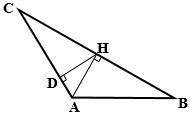Given: ∆ABC –iso. ∆, m∠BAC = 120° AH ⊥ BC HD⊥ AC AD = a cm, HD = b cm Find: P∆ABH
...

Mathematics, 03.07.2020 05:01, ambarpena14
Given: ∆ABC –iso. ∆, m∠BAC = 120° AH ⊥ BC HD⊥ AC AD = a cm, HD = b cm Find: P∆ABH


Answers: 3
Other questions on the subject: Mathematics

Mathematics, 21.06.2019 15:20, ibidnnudny2584
The data in the table represent the height of an object over time. which model best represents the data? height of an object time (seconds) height (feet) 05 1 50 2 70 3 48 quadratic, because the height of the object increases or decreases with a multiplicative rate of change quadratic, because the height increases and then decreases exponential, because the height of the object increases or decreases with a multiplicative rate of change exponential, because the height increases and then decreases
Answers: 1

Mathematics, 21.06.2019 15:30, mag331
Afruit stand has to decide what to charge for their produce. they need $10 for 4 apples and 4 oranges. they also need $15 for 6 apples and 6 oranges. we put this information into a system of linear equations. can we find a unique price for an apple and an orange?
Answers: 2

Mathematics, 21.06.2019 15:30, superstarsara5ouh83x
Write an equation of a line in slope intercept form that is perpendicular to the line 2x -3y = 12 and passes through the point (2, 6).
Answers: 3

Mathematics, 21.06.2019 18:00, hotrahul8702
Factor x2 – 8x + 15. which pair of numbers has a product of ac and a sum of what is the factored form of the
Answers: 1
Do you know the correct answer?
Questions in other subjects:




Mathematics, 05.07.2019 19:30

Mathematics, 05.07.2019 19:30










